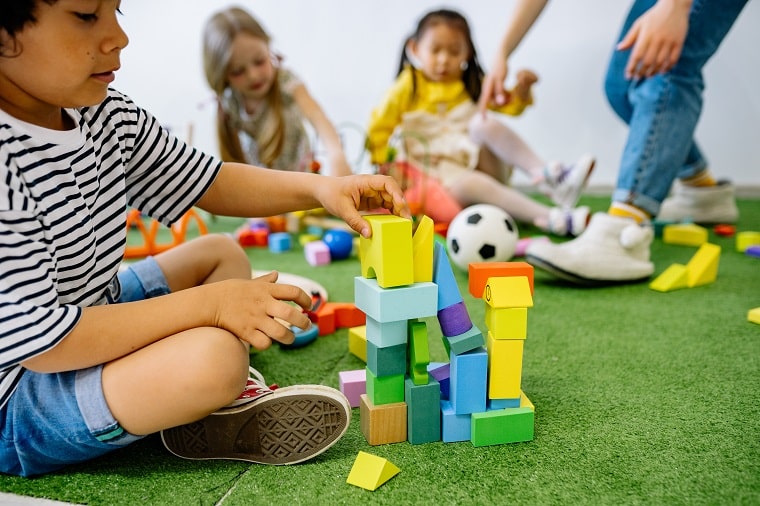Play-based learning is an engaging and effective strategy that aids in the development and education of children. Through play, children can enhance their creativity, bolster their social skills, and hone their problem-solving abilities. This method is adaptable and suitable for all children, regardless of their interests or skill levels. In this blog post, we will delve into the different facets of play-based learning, exploring its significance and offering inspiration for parents and educators alike. For more information on the benefits of play-based learning, check out Play-based Learning Inspiration page on EducationAll.
1. The Concept of Play-Based Learning
Play-based learning leverages games and various activities as a means of imparting essential skills and knowledge. It encourages children to explore their environment, interact with peers, and engage in imaginative scenarios. This approach fosters a learning environment that is both natural and enjoyable, making education an exciting adventure rather than a chore.
2. The Classroom Environment
Envision a classroom brimming with vibrant and captivating tools such as art supplies, puppets, building blocks, musical instruments, gardening implements, and sensory resources. These items are more than mere playthings; they are crucial educational resources that encourage children to investigate, invent, and absorb knowledge in stimulating ways. Such an environment promotes active engagement and curiosity, laying the foundation for lifelong learning.
3. The Role of Creative Arts
Creative arts materials provide a medium through which children can express their inner thoughts and emotions via drawing, painting, and crafting. This activity is not solely about enjoyment; it also plays a significant role in helping them articulate and process their feelings and ideas. Engaging in creative arts fosters emotional development and enhances fine motor skills.
4. Puppetry and Storytelling
Puppets are another key tool in play-based learning. Far from being just entertaining, they facilitate the development of narrative skills and empathy, as children engage in puppetry to explore various viewpoints and emotions. Puppetry encourages imaginative play and helps children develop their language and communication skills.
5. Building Blocks and Spatial Awareness
Building blocks serve as another fundamental component of play-based learning. Engaging with blocks, children come to understand shapes, dimensions, and spatial relationships, laying the groundwork for mathematical skills. Moreover, constructing with blocks introduces concepts of cause and effect, strategy planning, and problem-solving.
6. Musical Exploration
Musical instruments expose children to the realm of sound, rhythm, and melody. Engaging with music enhances auditory skills, boosts concentration, and can even support mathematical learning through the comprehension of beats and sequences. Music also encourages self-expression and can be a powerful tool for social interaction.
7. Gardening and Nature
Gardening tools connect children with nature, teaching them about life cycles, responsibility (through caring for plants), and science basics like photosynthesis and ecosystems. Gardening activities promote physical activity and can be a calming and therapeutic experience for children.
8. Sensory Play
Sensory tools are crucial for all children, especially those with additional needs. These tools help children explore their senses: touch, sight, sound, smell, and sometimes taste. They support emotional regulation, fine motor skills, and cognitive growth. Sensory play can be particularly beneficial for children with sensory processing disorders.
9. The Benefits of Play-Based Learning
This approach fosters a learning environment that is both natural and enjoyable. Children become more engaged and motivated, encouraged to inquire, seek solutions independently, and cultivate a passion for learning that extends beyond traditional educational settings. Play-based learning acknowledges each child’s individual learning pace and interests, embodying the belief in the vast potential of every child.
10. Investing in the Future
Investing in play-based learning resources is not merely a purchase of toys; it is an investment in our children’s futures, providing them with the curiosity, knowledge, and skills necessary to succeed in a constantly evolving world. By encouraging play-based learning, parents and educators can help children develop a love for learning, a sense of exploration, and the confidence to face challenges head-on.
Conclusion
Play-based learning is a powerful educational approach that can transform the way children learn and grow. By incorporating creative arts, puppetry, building blocks, musical instruments, gardening, and sensory tools into the learning environment, we can create a stimulating and supportive space for children to thrive. Both parents and educators have a crucial role to play in fostering this kind of learning, ensuring that children are equipped with the skills and knowledge they need to succeed.




